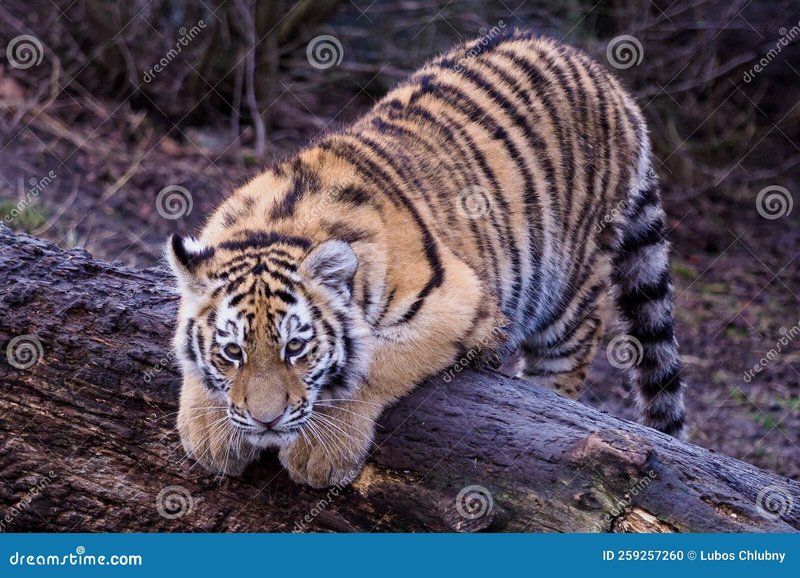
Imagine a world where intelligence isn’t measured by tests or grades, but by the ability to survive and thrive in the wild. Siberian tigers, known for their adaptability and problem-solving skills, are masters at navigating their complex environments. Let’s dig into the minds of these incredible animals and explore just how smart they really are.
Understanding Siberian Tiger Intelligence
To wrap our heads around Siberian tiger intelligence, it helps to define what we mean by “smart.” Unlike humans, tigers don’t take standardized tests, but their mental abilities shine through in various life skills. They rely heavily on survival instincts, which include hunting, navigating, and communicating with their surroundings.
One of the most impressive aspects of a Siberian tiger’s intellect is how they strategize during hunts. They often use stealth and patience, waiting for the perfect moment to pounce. This kind of planning requires not just instinct, but also an understanding of their prey’s behavior. It’s a bit like playing chess—anticipating your opponent’s moves and making calculated decisions based on that knowledge.
Moreover, these tigers show signs of problem-solving skills in their daily activities. For instance, if a Siberian tiger encounters an obstacle in its path, it doesn’t just give up. Instead, it assesses the situation and finds a way around it, demonstrating adaptability—a hallmark of intelligent behavior.
The Social Behavior of Siberian Tigers
You might be surprised to learn that Siberian tigers aren’t as solitary as many people think. While they do spend a lot of time alone, they also engage in social behaviors, especially when it comes to mating or rearing young. Their social interactions reflect a level of communication that indicates intelligence.
During mating season, male and female tigers will vocalize, using various sounds to communicate their intentions and establish territories. This is more than just instinct; it shows an understanding of social dynamics. A Siberian tiger can discern between friends and foes, adjusting its behavior accordingly.
Additionally, mothers display a high level of intelligence when raising cubs. They teach their young how to hunt and navigate their environment, which requires both patience and strategic thinking. Watching a mother tiger nurture her cubs is like observing an experienced instructor guiding eager students.
Hunting Techniques and Cognitive Skills
When it comes to hunting, Siberian tigers are nothing short of brilliant. Their strategy is built on a mix of patience, stealth, and learned experience. They often stalk their prey quietly, using their keen sense of sight and hearing to gather information about potential targets.
For example, a tiger might approach a herd of deer, using the underbrush to camouflage itself. This isn’t just instinct; it’s an application of learned tactics from previous hunts. They’ve figured out that a slow, stealthy approach often leads to success. This calculated thinking showcases a clear understanding of their ecosystem and how to exploit it for survival.
Moreover, Siberian tigers can adapt their hunting styles based on the environment. In snowy forests, they may target different prey compared to when they’re in more open areas. This ability to adapt reflects cognitive flexibility—an essential component of intelligence.
Problem-Solving Abilities
Siberian tigers display remarkable problem-solving abilities that allow them to overcome challenges in their environment. For instance, if they encounter a difficult terrain or a tricky obstacle, they’ll assess the situation rather than relying solely on brute strength.
Consider a scenario where a tiger comes across a river that blocks its path to a food source. Instead of giving up, it might find a way to swim across or look for a shallower area to cross. These quick thinking and adaptability skills highlight a level of intelligence that goes beyond mere survival instincts.
Additionally, studies have shown that tigers can learn from their experiences. If one approach to hunting fails, they might remember that the next time and try a different method. This ability to learn from past mistakes is a crucial indicator of cognitive intelligence.
Exploration and Territory Navigation
Siberian tigers are known for their vast territories, which they patrol regularly. This navigation is an impressive feat, requiring not only a good memory but also a keen sense of spatial awareness. Imagine having to remember the layout of a forest the size of a small city—this is what these tigers do daily.
They use scent markings to communicate with other tigers, marking boundaries and signaling their presence. Each scratch on a tree or scent deposit is a form of communication that requires an understanding of territory dynamics and social structure within the species.
Furthermore, tigers can traverse their territories effectively, which is crucial for hunting and avoiding conflicts. Their ability to memorize specific routes within their home range shows remarkable cognitive mapping skills.
Emotional Intelligence in Siberian Tigers
Now, let’s touch on something a bit softer—emotional intelligence. Siberian tigers, like many wild animals, exhibit different emotional responses. They express aggression, fear, and even affection towards their cubs. This ability to feel and respond emotionally indicates a level of intelligence we often overlook.
For instance, when a mother tiger is with her cubs, she’s not just protecting them; she’s also teaching them to navigate their emotions. If they’re startled by another animal, she’ll calm them down and guide them through the situation, showcasing her understanding of their emotional state.
Additionally, tigers can form bonds with others, even if they are primarily solitary animals. This bond can be observed in the way they interact during mating season or when caring for their young. It shows a depth to their intelligence that goes beyond mere survival.
In conclusion, Siberian tigers are more than just beautiful creatures; they are intelligent animals with incredible cognitive abilities and complex behaviors. From their strategic hunting techniques to their social interactions, these big cats showcase a range of skills that reflect their adaptability and problem-solving prowess.
Understanding the intelligence of Siberian tigers helps us appreciate their role in the ecosystem and the importance of protecting their habitats. As we learn more about their behavior and cognition, we deepen our connection to these magnificent beings—and that’s something worth valuing. So, the next time you think about a Siberian tiger, remember that there’s much more to them than just their powerful physique; their minds are just as fascinating.

